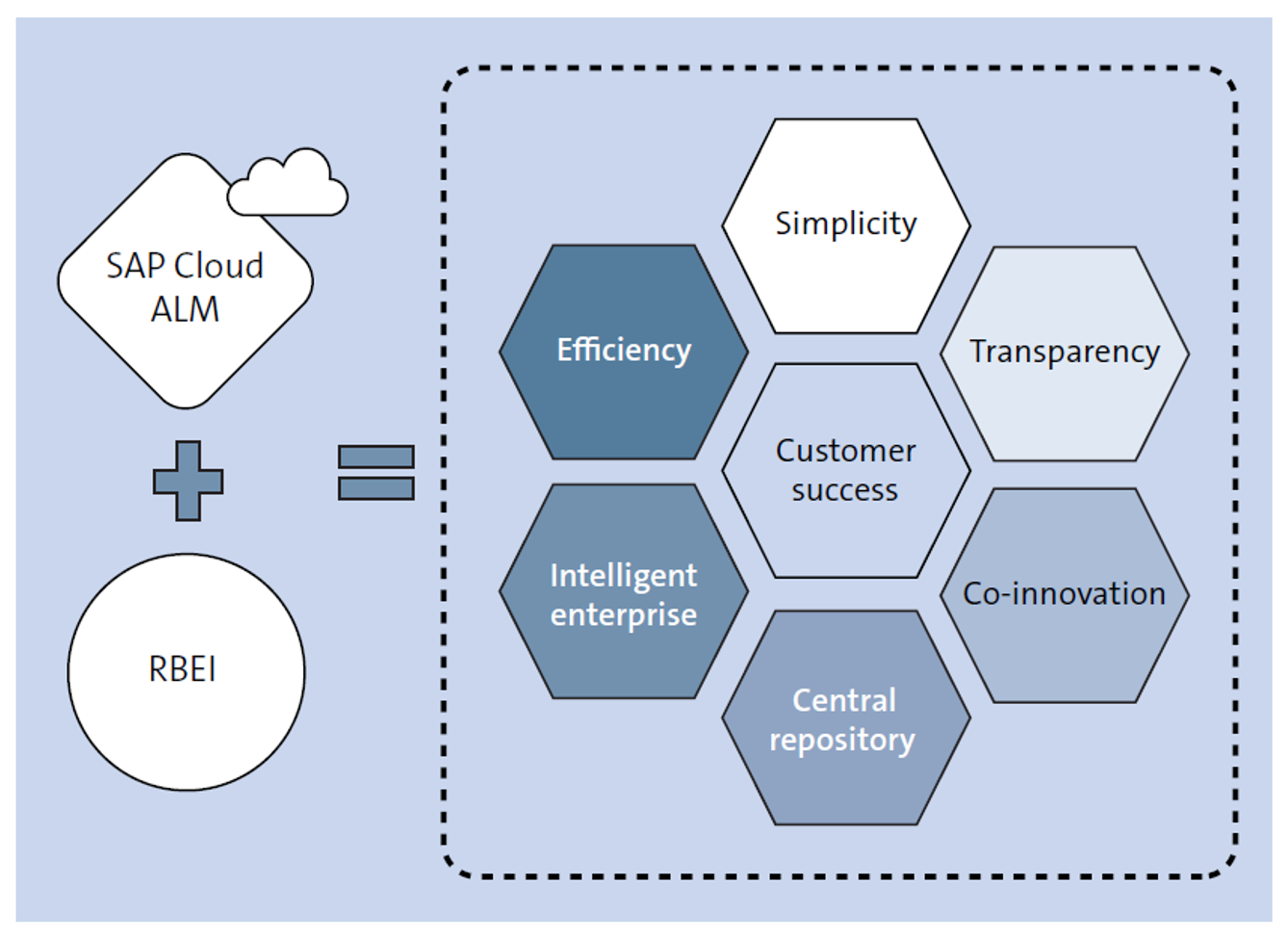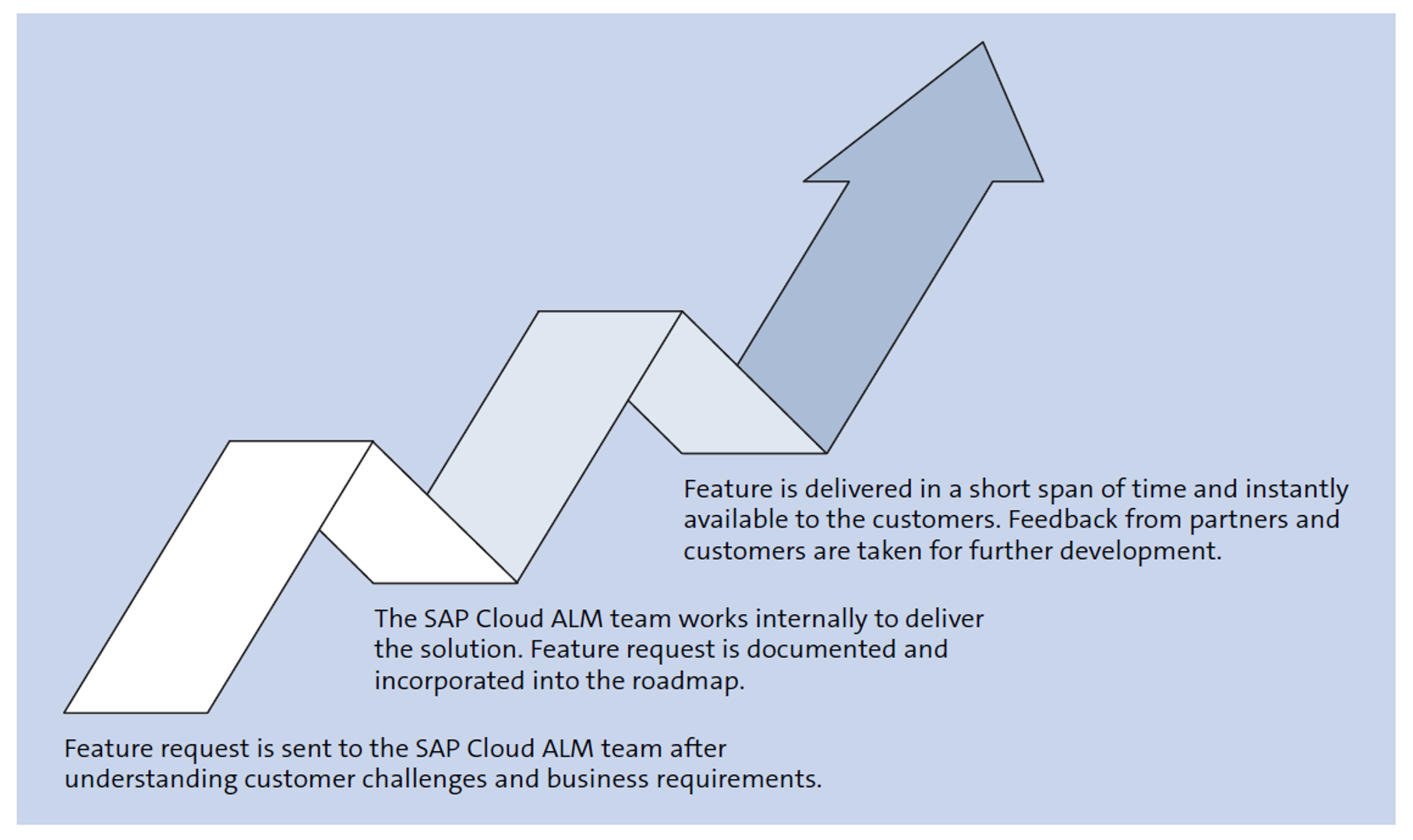The real test of any product is what happens when the rubber meets the road. In this post, we’ll look at a practical example of SAP Cloud ALM.
Many SAP partners both lead the front in tool adoption and go a step further by creating enhancements on top of it using our published APIs. They also help to shape the product by providing early feedback. We are thankful to RBEI for sharing the following story from their customer projects.
RBEI is a 100 percent owned subsidiary of Robert Bosch GmbH. It is one of the world’s leading global suppliers of technology and services, offering end-to-end engineering, IT, and business solutions. Syed Yousuff, Practice Head, Cloud and IT Infrastructure Platform at RBEI, provided insight on how RBEI took advantage of the SAP Cloud ALM.
One of RBEI’s major customers wanted to implement performance management, which is a part of the hire-to-retire process. They had an aggressive timeline to implement SAP SuccessFactors and to manage the complete lifecycle management. They wanted well-documented business processes to ensure a smooth transition from the implementation team to the support team.
As part of the SAP Early Adopter Care program, RBEI was amongst the first partners to adopt SAP Cloud ALM. Right from the initial interaction and exploration phase, they were confident in the benefits SAP Cloud ALM that would bring to implementation and operation activities and used it successfully to accelerate the implementation projects for their clients. When they proposed this solution to the customer and explained that it covers the entire product lifecycle, they did not face resistance, as the customer also wanted to reduce the tool clutter.
They started with installing SAP Cloud ALM, which was done in 15 minutes with a click of button. All the initial requirements were mapped into the system. They collected more than 200 requirements and created and managed more than 400 tasks. Later operational activities like end-to-end process monitoring and integration and exception monitoring were also done successfully using SAP Cloud ALM.

RBEI had a positive experience with this implementation and shared some of the benefits in the following list:
Simplicity and Transparency
RBEI found the UI and reports simple to consume. SAP Cloud ALM helped in highlighting the granularities like using different workstreams or tasks or at which stage they were currently in. They could consume intelligent enterprise scenarios and SAP Best Practices content, visualize processes, and manage the scope in fit-to-standard workshops. Before SAP Cloud ALM, they would give different status reports, reports every two weeks, and presentations to the customers during implementation projects, which was a tedious process for both them and their customers. Real-time status and transparency of the current state of project to all the stake holders in SAP Cloud ALM tool helped them save time and effort.
Faster Implementation and Reduced Effort
With the help of SAP Cloud ALM, they were able to reduce efforts up to 20% right in the initial preparation phase. They could also successfully shrink the timeline by avoiding redundant Excel sheets and templates.
Centralized Digital Repositories
They used the centralized digital repositories for processes, requirements, and tasks and used the standard processes available as best practices, avoiding the complications of recreating and running the processes for the customers. They mapped them successfully to the customer’s requirements and created and managed tasks.
The success of a project also depends on efficient collaboration and planning. RBEI has extended SAP Cloud ALM via SAP APIs. They enabled the seamless integration of SAP Cloud ALM with Microsoft Teams, which simplifies usage and results in higher adoption.
While working on a project, the number of emails triggered by all the project’s actions can be overwhelming. To save time and effort, they had the idea to integrate SAP Cloud ALM with a collaboration tool like Microsoft Teams.
They were informed about the release of APIs from the SAP Cloud ALM team, and they immediately started working to put the idea into action. The project team members and developers who did not have an SAP background were fascinated with the documentation, with clear instructions for every API usage, provided by the SAP Cloud ALM team. They were able to leverage APIs successfully using the GitHub samples and blog posts from the SAP Cloud ALM team.
Syed said, “We really fell in love with how adaptable the API is, and how amazing the documents are maintained and structured.” The project included the following components:
- Dashboard: The first scenario in which they worked was to visualize the tasks created in SAP Cloud ALM and the project’s overview in Microsoft Teams, as well as on-time tracking and status reporting.
- Kanban board: After successfully visualizing the entire project overview, they decided to utilize the interactive kanban board to plan their tasks in Microsoft Teams. They were able to replicate the task list from SAP Cloud ALM in the Microsoft Teams planner. Since Microsoft Teams was used in other projects, this was accepted by the teams, as they could work in any environment, automatically replicated. Also, the drag-and-drop capability of tasks in the kanban view was a very simple way of changing statuses.
- Create tasks: With enhanced collaboration combined with efficient task management, the project team could deliver with agility. They were able to create SAP Cloud ALM tasks directly from Microsoft Teams via message cards.
- Approval workflow: They were also able to initiate the workflow for approval based on predefined configurations in Microsoft Teams.
- Chatbot: They also made an interactive chatbot to communicate with SAP Cloud ALM.
RBEI was an early adopter of the tool and collaborated closely with the SAP Cloud ALM team. They truly experienced co-innovation, which was instrumental in further development. The business challenges were addressed and new solutions were invented together. This helped in delivering an immersive experience that drove the development of a co-innovation roadmap for future customers’ business implementation goals. They explicitly requested features like the Gantt chart and multiple teams in the same project; these innovations were delivered by the SAP Cloud ALM team within a short time span.

Editor’s note: This post has been adapted from a section of the e-book Introducing SAP Cloud ALM for Implementations by Jagmohan Singh Chawla, Wulff-Heinrich Knapp, and Nicolas Alech.




Comments